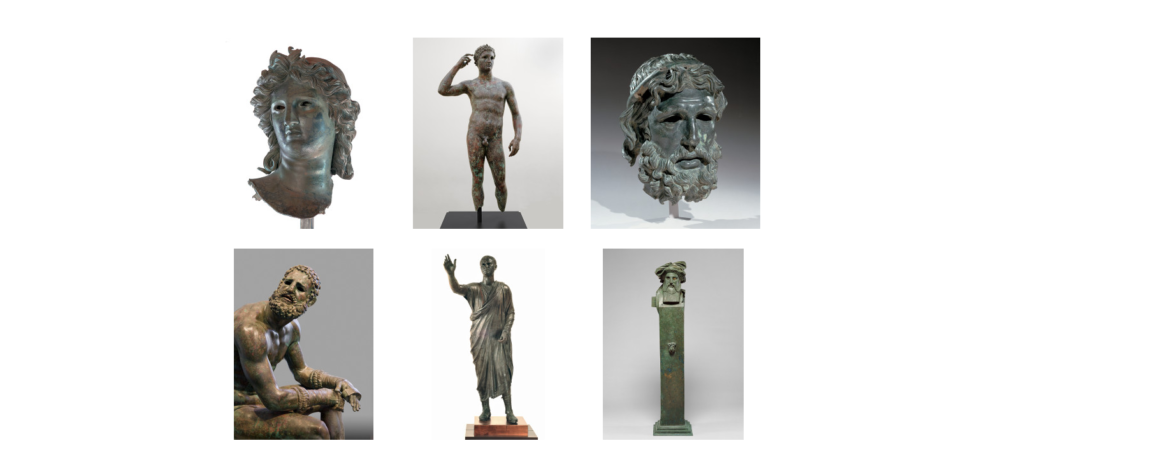
During the Hellenistic period from the death of Alexander the Great in 323 B.C. until the establishment of the Roman Empire in 31 B.C., the medium of bronze drove artistic innovation. Sculptors moved beyond Classical norms, supplementing traditional subjects and idealized forms with realistic renderings of physical and emotional states. Bronze—surpassing marble with its tensile strength, reflective effects, and ability to hold fine detail—was employed for dynamic compositions, dazzling displays of the nude body, and graphic expressions of age and character.
Cast from alloys of copper, tin, lead, and other elements, bronze statues were produced in the thousands: honorific portraits of rulers and citizens populated city squares, and images of gods, heroes, and mortals crowded sanctuaries. Few, however, survive. This unprecedented exhibition unites fifty significant bronzes of the Hellenistic age. New discoveries appear with works known for centuries, and several closely related statues are presented side by side for the first time.
This exhibition was organized by the J. Paul Getty Museum, the Fondazione Palazzo Strozzi in Florence, and the National Gallery of Art in Washington, with the participation of the Soprintendenza per i Beni Archeologici della Toscana. It is supported by an indemnity from the Federal Council on the Arts and the Humanities.
Bank of America is the National Sponsor of this touring exhibition. The Los Angeles presentation is also supported by the Getty Museum’s Villa Council, Vera R. Campbell Foundation, and the A. G. Leventis Foundation.
More details: http://www.getty.edu/art/exhibitions/power_pathos/

